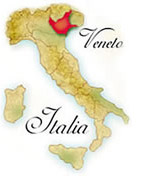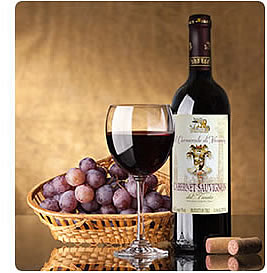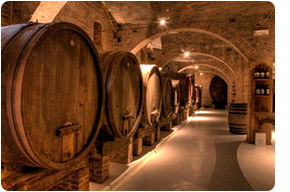The Carnevale di Venezia is a public festival in the Italian city of Venice. The Venetian Carnival is an international event becoming more and more important each year thanks to the participation of thousands of people who gather in the Venetian streets and squares.
Carnevale was first celebrated in Venice in 1094. For two weeks public areas around Venice become the showcase for actors, acrobats and musicians with residents and visitors alike wearing elaborate masks and elegants costumes.Carnevale typically involves public celebrations, parades, and public street parties. People often dress up with costumes during the celebrations. Specifically masks in Venice where they originated.
Today, approximately 3 million visitors come to Venice every year for Carnival. One of the most important events is the contest for la maschera più bella ("the most beautiful mask") takes place the last weekend of the Carnival and juried by a panel of international costume and fashion designers. The celebrations include performing arts, music, masquerade parades, and the traditional volo dell’angelo (flying angel), all in the unique setting of some of the ancient Venetian Palaces.
 Veneto is a wine region in north-eastern Italy, one of a group of three highly productive Italian regions known collectively as the Venezie (after the ancient Venetian Republic). Veneto's growers are among the most modernized in Italy. While most of the 'classic' wines from this area are based on native grape varieties like Garganega, high demand for Veneto wines in the European and US markets has galvanized the region's producers into experimentation with Cabernets, Chardonnay and Pinot varieties, among others.
Veneto is a wine region in north-eastern Italy, one of a group of three highly productive Italian regions known collectively as the Venezie (after the ancient Venetian Republic). Veneto's growers are among the most modernized in Italy. While most of the 'classic' wines from this area are based on native grape varieties like Garganega, high demand for Veneto wines in the European and US markets has galvanized the region's producers into experimentation with Cabernets, Chardonnay and Pinot varieties, among others.
 Cabernet Sauvignon is a hybrid of Cabernet Franc and Sauvignon Blanc, and one of the most popular wine grapes in the world. Cabernet Sauvignon has a long history in Italian wines, being first introduced to the Piedmont region in 1820. In the past century, Cabernet Sauvignon has enjoyed a swell of popularity as one of the noble grapes in the world of wine.
Cabernet Sauvignon is a hybrid of Cabernet Franc and Sauvignon Blanc, and one of the most popular wine grapes in the world. Cabernet Sauvignon has a long history in Italian wines, being first introduced to the Piedmont region in 1820. In the past century, Cabernet Sauvignon has enjoyed a swell of popularity as one of the noble grapes in the world of wine.
Chardonnay has a long history in Italy. By the late 20th century, more concentrated efforts were put into identifying Chardonnay and making pure varietal versions of the wine. By 2000, it was Italy's fourth most widely planted white wine grape. Most Chardonnay plantings are located in the northern wine regions, and in Veneto, it is often blended with Garganega to give more weight and structure to the wine.
Pinot Grigio is also known as Pinot Gris, and plantings can be found in the Lombardy region around Oltrepo Pavese and in Alto Adige, Italy's northernmost wine region. The grape is also prominent in the Friuli-Venezia Giulia region. The grapes grow in small clusters (hence the pinecone shape). Wines made from the Pinot Grigio vary greatly and are dependent on the region and wine making style they are from. The Pinot Grigio style of Italy is a light-bodied, often lean wine that is light in color with sometimes spritzy flavors that can be crisp and acidic. Italian Pinot Grigio comes from a special Denominazione di Origine Controllata (DOC) region called Delle Venezie DOC. This region includes provinces of Veneto, Friuli-Venezia-Giulia and Trentino.
 Merlot is a dark blue-colored wine grape that is used as both a blending grape and for varietal wines. Merlot's low acidity serves as a balance for the higher acidity in many Italian wine grapes with the grape often being used in blends in Veneto, Alto Adige and Umbria. Merlot-based wines usually have medium body with hints of berry, plum, and currant. Merlot is also one of the most popular red wine varietals in many markets. This flexibility has helped to make it one of the world's most planted grape varieties.
Merlot is a dark blue-colored wine grape that is used as both a blending grape and for varietal wines. Merlot's low acidity serves as a balance for the higher acidity in many Italian wine grapes with the grape often being used in blends in Veneto, Alto Adige and Umbria. Merlot-based wines usually have medium body with hints of berry, plum, and currant. Merlot is also one of the most popular red wine varietals in many markets. This flexibility has helped to make it one of the world's most planted grape varieties.
Chianti is any wine produced in the Chianti region, in central Tuscany. For a wine to retain the name of Chianti, it must be produced with at least 80% Sangiovese grapes. The Chianti region covers a vast area of Tuscany and includes within its boundaries several overlapping Denominazione di Origine Controllata (DOC) and Denominazione di Origine Controllata e Garantita (DOCG) regions. Chiantis tend to have medium-high acidity and medium tannins. The acidity in the wines makes them very flexible with food, particularly with Italian cuisines that feature red sauce, as well as beef, lamb and game.
Semi-Sweet Rosso is a wine carefully crafted in Northern Italy. It is sweet, rich, and silky and offers a perfect complement to any cuisine. Made from Sangiovese grown in the beautiful region of Reggio Emilia for centuries. These wines make a wonderful aperitif and are also incredibly food friendly. It seamlessly combines a long-held grape growing tradition with the flair of modern winemaking techniques and style. The result is a wine of enticing character that perfectly satisfies our thirst for sweet reds. With 12% alcohol, our wine is balanced and pleasant to the palate. Enjoy it with tomato-based sauces, parmesan cheese, prosciutto, spicy foods and more. Serve chilled.
Semi-Sweet Bianco is carefully crafted in Northern Italy. It is delicately sweet, soft and refreshing and offers a perfect complement to a wide variety of dishes. Made from Trebbiano grown in the beautiful region of Reggio Emilia for centuries. This wine makes a wonderful aperitif and is also incredibly food friendly. It seamlessly combines a long-held grape growing tradition with the flair of modern winemaking techniques and style. The result is a wine of enticing character that satisfies our thirst for sweet whites. With 12% alcohol, our wine is balanced and pleasant to the palate. Enjoy it with salads, white meats, classic Italian dishes and spicy foods. Serve chilled.
Prosecco is a sparkling wine that originates from Valdobbiadene region in Veneto, Italy. The wine is made from Prosecco grapes (also called Glera) and made into wine via the charmat sparkling method. This gives the wine approximately 3 atmospheres of pressure. Prosecco is about two times the pressure of beer and half the pressure of Champagne. Prosecco shows balance between fruity flavors, acidity and subtle sweetness. It should be served cold (42–46 °F / 5–8 °C) and most will agree that the best glasses to serve Prosecco are in a sparkling tulip glass or a glass with a larger bulb that will better accentuate the wine's floral character.
Sparkling Moscato is a popular, intensely fruity, and often sweet style of wine made from the fragrant Muscat grapes in Veneto, Italy. Common exuberant aromas found in Moscato wines are blossom, peach, citrus, and nectarine. The residual sweetness in the wines means all sugars from the grape haven't been fermented into alcohol, resulting in wines with lower alcoholic strength (5-9 % ABV). It should be served cold (38–45 °F / 3–7 °C) and in either a Champagne flute to maintain the bubbles or a wine glass with a smaller bowl to help the floral character not overpower the other characteristics.
Sparkling Rosé is a wine that obtains its color from the grape skins, but not enough to qualify as red wine. This rosé is from Veneto, Italy and has fine and persistent bubbles. Combining subtle sweetness with balanced acidity results in a refreshing and light bodied sparkling wine produced from dark skinned grapes. It should be served cold (42–46 °F / 5–8 °C) and most will agree that the best glasses to serve Sparkling Rosé are in a sparkling tulip glass or a white wine glass that will better accentuate the wine's floral fruity character.

